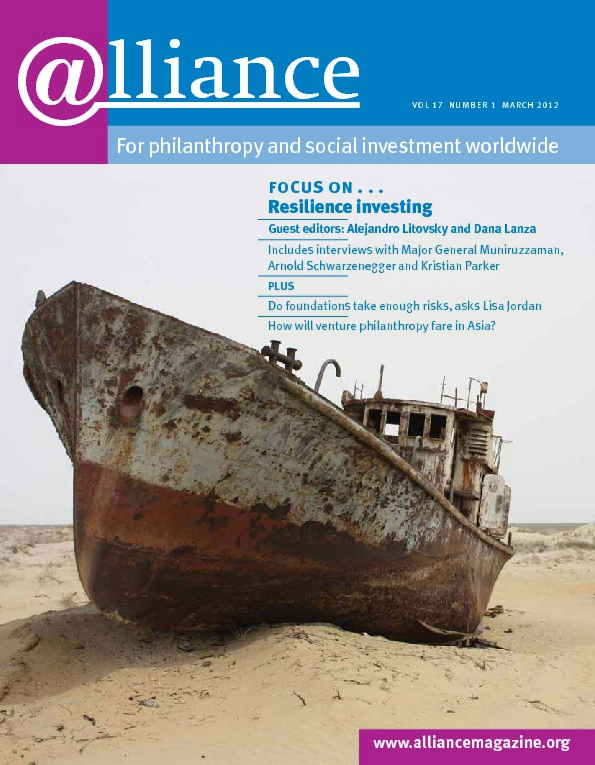When most people think about the causes of climate change, they imagine cars, smokestacks, factories spewing out all manner of greenhouse gases (GHGs). In fact, between a third and a quarter of global GHG emissions come from the destruction or transformation of natural ecosystems.
In other words, as we continue cutting down and burning the world’s forests, we emit vast amounts of greenhouse gases. And it isn’t only about the destruction of the Amazon rainforest. Many of these transformations are taking place much closer to home: in the farms and pastures that provide our food.
 In the US, agriculture accounts for an amount of GHG emissions equal to about a quarter of the nation’s transportation emissions or a third of industrial emissions. Agriculture and forestry also play an important role in removing greenhouse gases from the atmosphere (a process known as ‘carbon sequestration’) (see below). At first glance, the potential for agriculture to play a central role in addressing the challenge of climate change appears extremely attractive: emissions could be reduced at low cost, carbon could be sequestered in the soil, and farmers could benefit economically. In fact, technical, economic and political barriers have so far prevented the significant involvement of agriculture in the climate solution.
In the US, agriculture accounts for an amount of GHG emissions equal to about a quarter of the nation’s transportation emissions or a third of industrial emissions. Agriculture and forestry also play an important role in removing greenhouse gases from the atmosphere (a process known as ‘carbon sequestration’) (see below). At first glance, the potential for agriculture to play a central role in addressing the challenge of climate change appears extremely attractive: emissions could be reduced at low cost, carbon could be sequestered in the soil, and farmers could benefit economically. In fact, technical, economic and political barriers have so far prevented the significant involvement of agriculture in the climate solution.
From an investor’s point of view, resolving this question is attractive because it offers not one but two investment opportunities. First, as the threat of climate change gets more and more evident, the world will move towards forms of agriculture that are better suited to our new carbon-constrained reality. If investors invest in this type of agriculture early, there is a chance that these investments could pay off handsomely in the medium term. Likewise, if agriculture can be seen as a part of the solution to our climate change problems, it may be that emerging carbon markets will begin to channel money towards agricultural carbon projects. If so, investments in projects like this can benefit from revenue from carbon markets.
At EKO Asset Management Partners, we are interested in new and emerging environmental markets. We not only have a fund that invests in carbon projects, but we are looking at other ways that environmental realities might translate into investment opportunities. We see carbon-friendly farming as a core investment strategy for us. But before this investment strategy can pay off there are some fundamental questions that need to be answered:
- Can we truly understand and measure the impact of agriculture on climate change?
- How do we minimize that impact?
- Should carbon markets pay for emissions reductions from agriculture?
C-AGG – bringing the stakeholders together
While the goals of mitigating climate change and enhancing farm production and income may be intrinsically aligned at the biological level – any decreases in carbon capture by farmers or increases in emissions of nitrogen simply mean that farmers are producing less and/or being less effective with costly fertilizers – they have more often been at odds politically. Farmers have been resistant, fearing new regulations that would force them to change their farming practices. In fact, the failure of climate change legislation to pass in the US Senate in 2010 owed much to lobbying from farming groups.
Any approach to a solution would need to have the support of at least five important groups: farmers, since solutions need to be practical to implement and make economic sense at the farm level; agricultural scientists, since it needs to be shown that solutions would result in real reductions in GHG emissions and make agronomic sense; investors, since any policy framework would need to mobilize private capital to achieve the sort of scale that matters; policymakers, since no solution could work without the right policy framework; and environmentalists, many of whom are concerned that the wrong policies might result in another subsidy for farmers without any real benefits for the climate. All five of these groups were represented at a meeting in 2009 convened by EKO Asset Management Partners, the Packard Foundation, the California Farm Bureau and the Environmental Defense Fund at Cavallo Point in California.
The Cavallo Point meeting helped to clarify some key issues. First, there had been more emphasis on areas of disagreement (for instance, is climate change real?) than on areas where all stakeholders agreed (for example, lower emissions of N2O mean better use of fertilizers). But even the areas of agreement had not been translated into policy recommendations that could be put in place by governments at state and federal levels. Finally, methodologies and protocols did not exist that would enable accurate measurement of emissions reductions or carbon sequestration, and without those methodologies the solutions weren’t likely to be seen as ‘real’ by farmers, investors or environmentalists. The participants agreed to work collectively to address these issues through the Coalition for Agricultural Greenhouse Gases, or C-AGG.
C-AGG’s work also highlighted the need for further work on understanding and disseminating the science and addressing the technical barriers to progress, so a sister organization, the Technical Working Group on Agricultural Greenhouse Gases (T-AGG), was formed. By providing a forum for multi-stakeholder discussion, C-AGG is now actively contributing to the design and implementation of new protocols for agricultural emissions reductions, pilot projects on farms, work within the retail sector to reduce the GHG emissions of suppliers of agricultural products, development of data and monitoring systems, and development of new policies and regulatory guidelines.
Progress to date
One tangible outcome of the C-AGG approach is that over the last six months of 2011, two of the carbon market registries in the US (the Climate Action Reserve and the American Carbon Registry) have approved their first agricultural carbon market protocols/methodologies. This means that investors such as EKO now have ways of investing in agricultural carbon market projects that might eventually be sold on existing carbon markets.
The real breakthrough, however, will be when regulated carbon markets such as the emerging California carbon market or the EU Emissions Trading Scheme find ways for agricultural carbon projects to enter their markets. There is currently no sign that the EU will ever approve such projects, but the regulators in California have indicated that they would like to see agricultural projects enter their market in the near future. If and when that happens, we could see investments worth tens of millions, or even hundreds of millions, of dollars being channelled towards farming that is good for the environment, good for farmers and good for investors.
There is much still to be done. The C-AGG discussions are still not ‘mainstream’ in any of the stakeholder groups. Within philanthropy, only a handful of foundations support work on agriculture and climate mitigation. Likewise, few investors see agriculture and carbon as an important area. Still, C-AGG and its related initiatives have demonstrated that climate policy and carbon markets, if properly designed, can help address climate change, enhance farmer income and bring the farming community into the climate change debate. It has also increased the recognition that there is an important role for the agricultural community to play if we are to address the problems of climate change. Not only can farming help sequester carbon but it can help reduce emissions substantially. Finally, C-AGG is demonstrating that there really can be (and must be) common cause between farmers and those seeking to mitigate and address the dangers of climate change.
Ricardo Bayon is partner and co-founder of EKO Asset Management. Email rbayon@ekoamp.com
Walt Reid is Director, Conservation and Science Program, David and Lucile Packard Foundation. Email WReid@packard.org
For more information
http://www.c-agg.org
For T-AGG materials
http://nicholasinstitute.duke.edu/ecosystem/t-agg
Agriculture and climate
Approximately 6 per cent of US GHG emissions come from agricultural practices, nearly half of this from the fertilization of crops. Not all of the fertilizer that farmers apply to their fields is absorbed by crops, and one byproduct of the unused fertilizer is nitrous oxide – a powerful greenhouse gas with several hundred times the global warming potential of carbon dioxide. Production of livestock is another major source of emissions from US agriculture through the release of methane gas (a byproduct of digestion and of manure decomposition), another powerful greenhouse gas.
In addition, agriculture and forestry can actually remove CO2 from the atmosphere and sequester it in the soil. The natural carbon cycle consists of plants taking carbon out of the atmosphere, transforming it into wood and biomass via photosynthesis, and then giving off oxygen. Growth of forests thus removes carbon from the atmosphere and, with the right agricultural management practices, agriculture can do so too. Some of the biomass produced is sequestered in the soil, building up its organic content, which provides a number of benefits to crops by retaining water and nutrients in the soil. All told, US forest and agricultural land offset some 15 per cent of our emissions each year through these processes.


Comments (0)